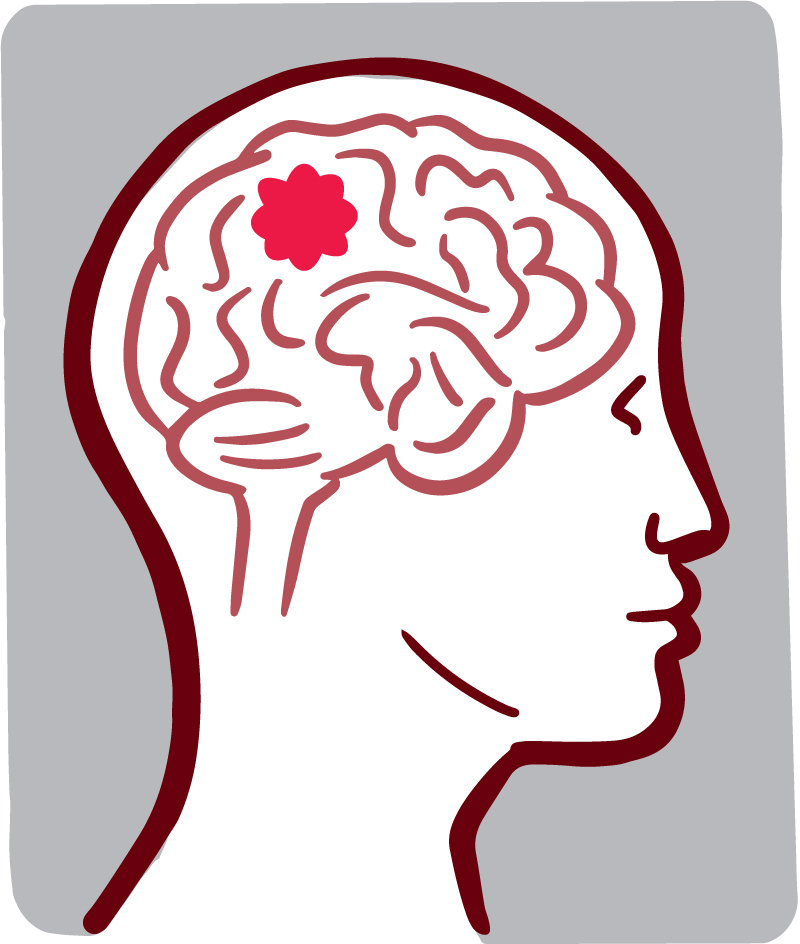Spotlight on Brain Tumors
Do You Know the Symptoms?

A tumor in the brain isn’t like tumors in other parts of your body. It has limited room for growth because of the skull. This means that a growing tumor can squeeze vital parts of the brain and lead to serious health problems. Learning about the possible symptoms of brain tumors can help you know when to tell a doctor about them.
A tumor is an abnormal mass of cells. When most normal cells grow old or get damaged, they die, and new cells take their place. Sometimes, this process goes wrong. New cells form when the body doesn’t need them, and old or damaged cells don’t die as they should. The extra cells can form a tumor.
A tumor that starts in the brain is called a primary brain tumor. People of all ages can develop this type of tumor, even children. And there are many different ways they can form.
“There are over 130 different types of primary brain tumors,” says Dr. Mark R. Gilbert, an NIH brain tumor expert. About 80,000 people in the U.S. are diagnosed with a primary brain tumor each year.
Cancer that has spread to the brain from another part of the body is called a metastatic brain tumor. Metastatic brain tumors are far more common than primary tumors.
Both primary and metastatic brain tumors can cause similar symptoms. Symptoms depend mainly on where the tumor is in the brain.
“The symptoms of brain tumors can be either dramatic or subtle,” Gilbert says. A seizure is an example of a dramatic symptom. About 3 of every 10 patients with a brain tumor are diagnosed after having a seizure, he explains.
Other symptoms are less obvious. For example, you might notice memory problems or weakness on one side of your body. Until symptoms develop, you may not know you have a brain tumor. For a list of common symptoms of brain tumors, see the Wise Choices box.
If you have symptoms that suggest a brain tumor, tell your doctor. Your doctor will give you a physical exam and ask about your personal and family health history. You may need to have additional tests. Tumors can be detected by imaging methods such as MRI or CT scans.
“Brain imaging technology has really changed the way we are able to visualize abnormalities,” Gilbert explains. It allows brain surgeons to learn as much as possible about the tumor and remove it more safely.
NIH researchers are continuing to look for ways to better detect and treat brain tumors. Treatments differ depending on the type and location of the tumor. Treatment can involve surgery, radiation (beams of high energy rays aimed at the tumor), or drugs that kill or block the growth of cancer cells.
Usually, brain tumor treatment requires a team of health care professionals. This may include surgeons, cancer specialists, nutritionists, nurses, and mental health providers. The team does more than treat the tumor. They also try to minimize its impact on a patient’s quality of life.
“There is a definite advantage to being cared for by people who do this on a routine basis,” Gilbert says. A person who has been diagnosed with a brain tumor may want to seek treatment at a nearby cancer center, if possible. To look for a cancer center near you, visit www.cancer.gov/research/nci-role/cancer-centers.
NIH Office of Communications and Public Liaison
Health and Science Publications Branch
Building 31, Room 5B52
Bethesda, MD 20892-2094
Contact Us:
nihnewsinhealth@od.nih.gov
Phone: 301-451-8224
Share Our Materials: Reprint our articles and illustrations in your own publication. Our material is not copyrighted. Please acknowledge NIH News in Health as the source and send us a copy.
For more consumer health news and information, visit health.nih.gov.
For wellness toolkits, visit www.nih.gov/wellnesstoolkits.




